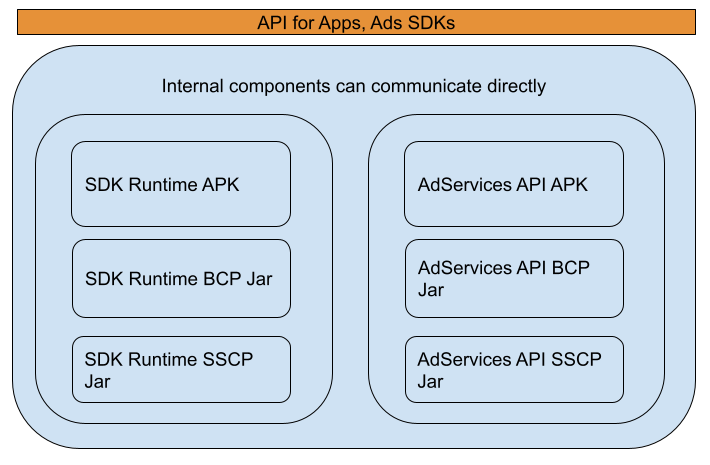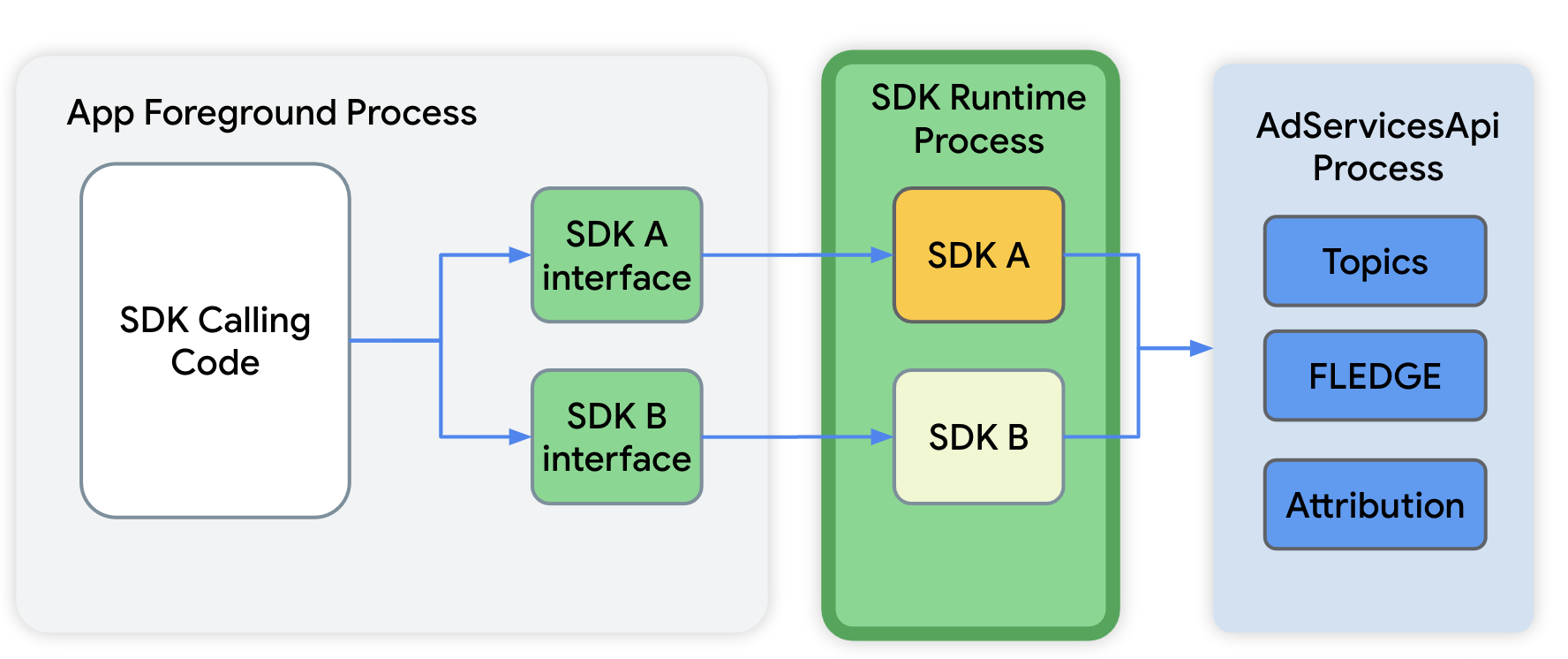Android 13부터 도입된 AdServices 모듈은 온라인에서 사용자의 개인 정보를 보호하고 기업 및 개발자에게 성공적인 디지털 비즈니스를 구축할 수 있는 도구를 제공하는 개인 정보 보호 샌드박스 이니셔티브를 지원합니다.
자세한 내용은 Android 개발자 사이트를 참고하세요.
동기
개인 정보 보호 샌드박스 이니셔티브의 목표는 다음과 같습니다.
- 사용자 정보를 비공개로 유지하는 새로운 기술 개발
- 게시자와 개발자가 온라인 콘텐츠를 무료로 제공할 수 있도록 지원
- 새로운 인터넷 개인 정보 보호 표준 구축을 위해 업계와 협력
모듈 경계
AdServices 아키텍처: 이 모듈은 모듈 경계가 없는 새로운 코드입니다.
코드 위치: packages/modules/AdServices
그림 1은 AdServices 모듈 설정을 보여줍니다.

그림 1. AdServices 모듈 API 디자인

그림 2. AdServices 모듈 설정
패키지 형식
패키지의 주요 기능은 APX 형식으로 제공됩니다(com.google.android.adservices).
개인 정보 보호 API 기능은 APK 형식으로 제공됩니다(com.google.android.adservices.api).
SDK 런타임 기능은 APK 형식으로 제공됩니다(com.google.android.app.sdksandbox).
AdServices에 관한 자세한 내용은 다음 페이지를 참고하세요.
종속 항목
- SDKSandbox의 새 sepolicy 도메인
- SDKSandbox의 제한사항: 제한된 스토리지, 인텐트, 브로드캐스트 등
- 잘 정의된 권한, 광고 SDK가 앱에서 권한을 상속받지 않음
- OS 변경사항: 샌드박스 UID 처리
